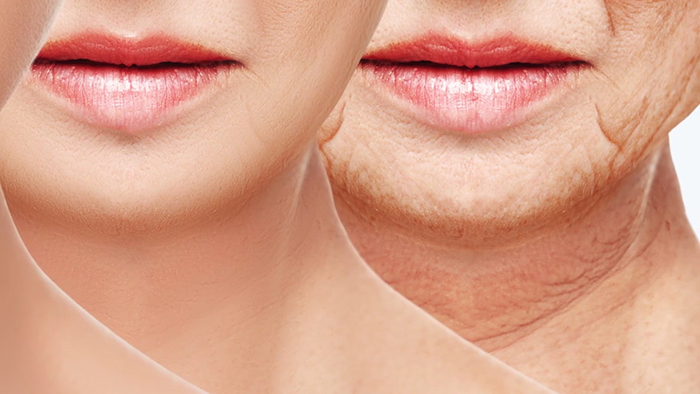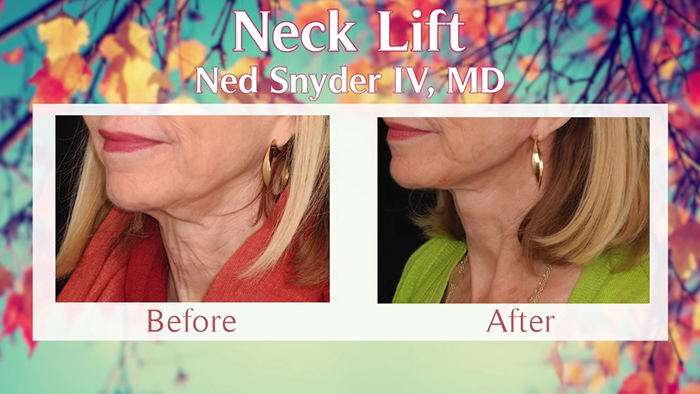In decades past, patients waited until much later in life to undergo plastic surgery as a means to reverse the signs of aging. Today, a maintenance approach is much more common. From injectable fillers to laser therapies, younger patients have many options to nip the effects of aging as they appear. As a result, older patients are undergoing less intensive operations to get the more natural results they desire. Dr. Ned Snyder, a board certified plastic surgeon in Austin, describes this trend and specifically how it pertains to the aging neck.
40’s & 50’s: Initial Facelift
Today’s selfie culture heightens our awareness of facial aging. As a result, facelift surgery has changed to better serve the needs of the younger patient. Early signs of aging occurring in the 40’s and 50’s include skin laxity around the mouth, jawline, and cheeks.
Facial Aging in the 40’s & 50’s:
- Volume loss
- Skin laxity & sagging jowls
- Wrinkles & lines around the mouth and nose
A facelift procedure addresses these early signs of aging in the face through incisions placed around the ear; reduced wrinkles, youthful volume restoration, and a crisp jawline result. Some patients in their 40’s with less advanced aging are candidates for a shorter scar facelift procedure, also known as a mini facelift. Unlike traditional facelifts, short scar facelifts utilize smaller incisions around the ears, resulting in less scars and a possibly a shorter recovery time, but also a more minimal result.

60’s & 70’s: Follow Up Neck Lift
While the neck sees some improvement with a facelift, the area of the neck furthest from the ear, where the facelift incision is placed, is often the least improved and continues to age. By the time a facelift patient’s 60’s and 70’s roll around, the front part of the neck is often the biggest age giveaway.
“A lot of patients that I do neck lifts on now, are ones who have had previous facelifts,” shares Dr. Snyder. “The component that we don’t really truly address in a facelift is some of the crepiness or loose skin that we see on the anterior (front) part of the neck.”
Vertical vs. Horizontal Tightening
To determine if a patient is a candidate for a secondary necklift procedure, Dr. Snyder encourages them to look in a mirror and pull on their neck skin in two directions: horizontal and vertical. Pulling neck skin vertically, meaning up towards the ear, does not have any effect on loose skin at the front of the neck. Even when the vertical pull is angled slightly horizontally toward the back of the head, tightening effects are not extended to the front of the neck.

Only when skin is pulled in a true horizontal direction toward the back of the neck will you notice the skin in the front of the neck tighten. “When someone’s skin is truly lax all the way across the front of the neck, we have to pull in a horizontal direction to address that,” explains Snyder.
Non-Traditional Neck Lift Incisions
To achieve a horizontal lift, Dr. Snyder places incisions in the hairline in the area behind the ears towards the back of the head. As a result, most patients are able to hide the incisions by covering them with hair as they heal, and the incisions continue to fade and improve over time.
Neck Lift Recovery
One benefit to having two separate facelift/necklift procedures done at different stages in life is a less dramatic result each time. A second benefit is an easier recovery after each procedure. When compared to a primary facelift, the necklift done as a secondary procedure has a much shorter recovery time. “I think that people look exceptional, even a week or a week and a half out,” says Snyder.